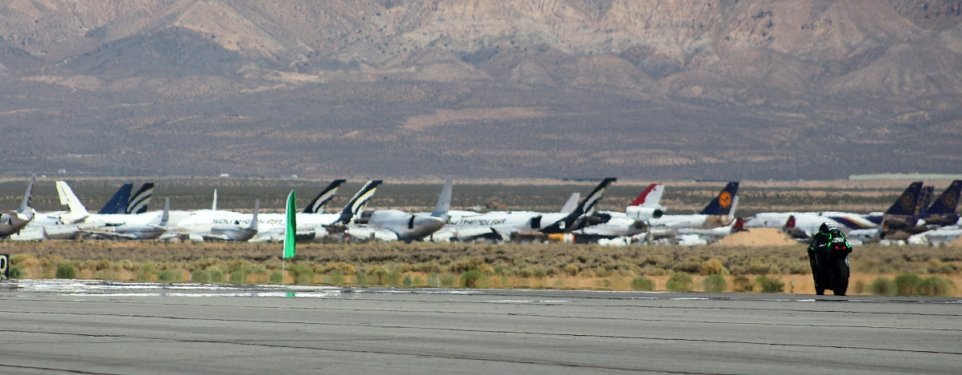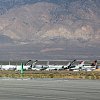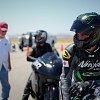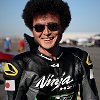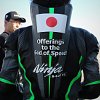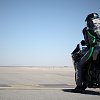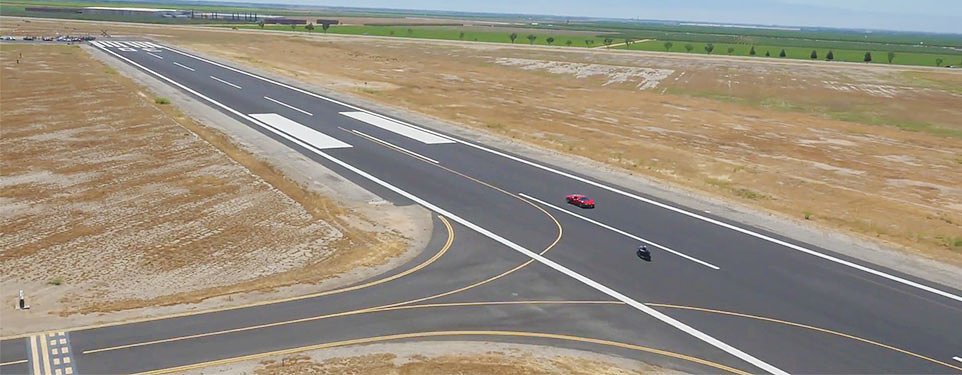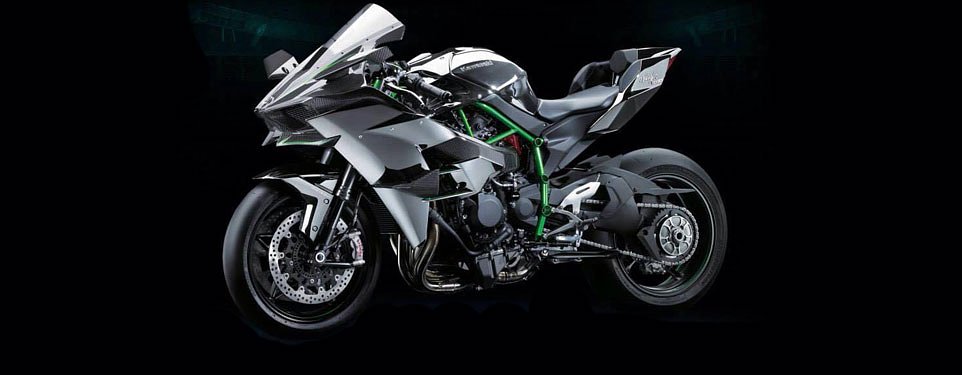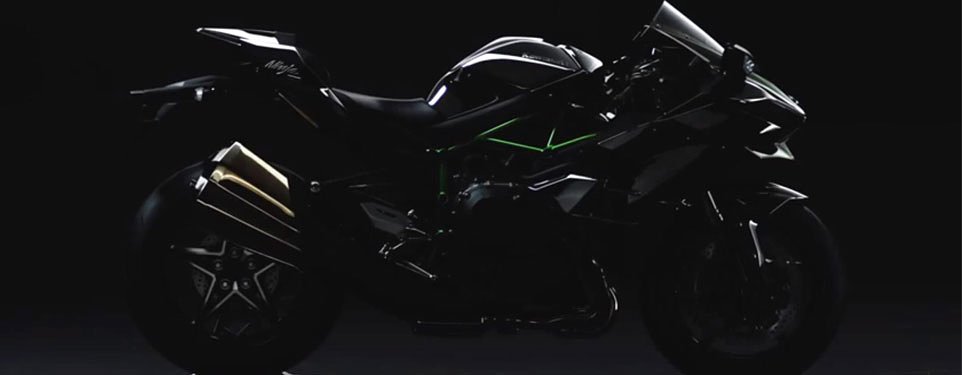It was the only vehicle, on two wheels or four, that truly threatened my eardrums.
Kawasaki sent “Team 38” from Japan to test the limits of the supercharged H2R, the non-street-legal version of the H2. Unfortunately, the Bonneville Salt Flats were too wet for the usual Speed Week testing. But the Southern California Timing Association (SCTA) created some consolation for competitors by obtaining use of the Mojave Air and Space Port for standing-mile runs, instantly making it the new desired destination for record breakers and glory seekers from all over the world.

Justin and I had just made our own run, a 10-hour flight from Tokyo to Los Angeles. So here I am, standing at one end of a 1.5-mile long air strip, jet-lagged as all hell and fully unprepared for the blaring sun and roaring engines. I was fortunate enough to inhale exhaust from highly modified Mustangs, custom Harleys and homemade streamliners, from rebuilt classics, impressive sport bikes and Kawasaki’s own H2R. Everything and everyone was so different, yet they shared two very important experiences that would affect them all the same: attempting to make high-speed history and suffering heat stroke and sunburns while waiting in line for their turn. Did I mention it was hot?

Kawasaki stood out. Not only did the H2R grab the attention of any passerby, but the Japanese squad members, with their tan skin, stylish ensembles and friendly demeanor, welcomed many eyes and even more questions. For one, despite the grueling heat, they were covered head to toe in black. I was shocked. I felt dizzy just looking at them. Yet they were busy at work with no complaints to be heard.
We were recognized immediately by our violently neon-green oversized vests with “Press” typed across our chests. So we were greeted with open arms and cold refreshments. Day one was for trial and error. Day two, that's the day they were going for their goal: 220 mph, an ambitious mark for such a short stretch.

The standing mile is a different kind of test than the multi-mile runs at Bonneville on the relatively low traction of the salt. At Mojave, traction is abundant but the distance is shorter, so the rider must launch hard to hit the fastest speed possible at the end of the measured mile. But this is what the $50,000 H2R was built for, with its supercharged, 998 cc four-cylinder engine producing nearly 300 horsepower.
On Saturday, Kawasaki's soft-spoken and gracious rider, Shigeru Yamasiata, reached a top speed of 216.4 mph on his best run.


And then the roar of the H2R cut me off mid-thought. It was the first run on the track since switching the pre-production fuel pump. "2-0-8," the loudspeaker announced. Fast, very fast, but not nearly as fast as they wanted to be. "216 sounds incredibly different than 208," lamented Kawasaki’s marketing man. Their disappointment couldn't be hidden. But it couldn't stop them, either.

I don’t think I’ll forget the sound that this bike made as it sped past us, impossible to capture in focus — though we tried. But the shattering boom that tore into my ears when the chief mechanic braap, braap’d the throttle was embedded into my memory whether I wanted it or not.
I heard "maybe one more" about three times. But in the end, 214.8 mph turned out to be their best time of the day. Great! But the goal of 220 mph was unfortunately not obtained. No one was cheering back at the trailer, but no one was solemn either. They just scratched notes in their notebooks, typed away on their computers, and inspected the bike one last time. This was the point, after all: testing, trial and error. These men didn’t fly halfway across the world to an arid desert for perfection packaged up and waiting for them at the runway. They were there to test something that had been years in the making... to its limits.
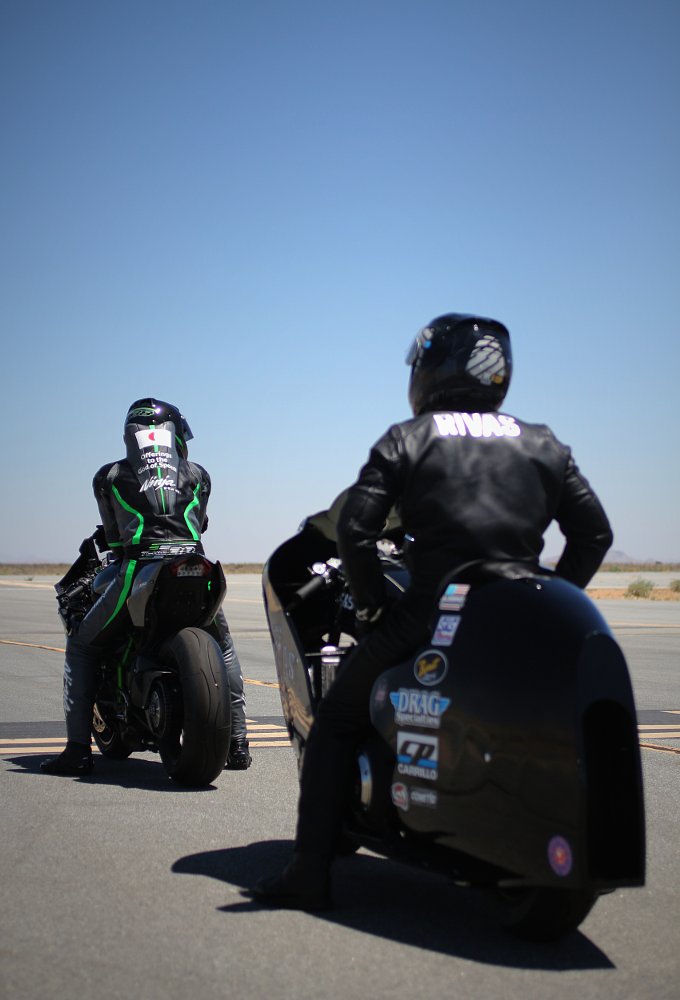
The SCTA runs drew bold hearts from all over the world: Russians, Brits, Australians, Germans, Swedes, and many more. We met a couple of Americans who had hand-built a streamliner powered by a YZ 85 two-stroke engine, driven head first, so long and low it tipped over under 10 mph. They were aiming for 110 mph. The captain of this vessel had never ridden a bike before this project, and his words to us at the start were along the lines of, “My wife doesn't like me going head first, 100 miles an hour, but... what are you gonna do?”
Around us, supercharged V8s blew the hats (and eardrums) off hillbillies in cutoff T-shirts while they laughed loudly. The fastest of the event, a 1969 Camaro named "Big Red," exploded down the straightway at 232.9 mph! Maybe those “bumpkins” knew something. Or maybe they were already deaf.
But what I figured out by Sunday afternoon, in the scorching heat of the Mojave Desert: this — the ear-splitting growl from custom-built engines — was the sound of America. It's loud. It's fast. And it's free.




